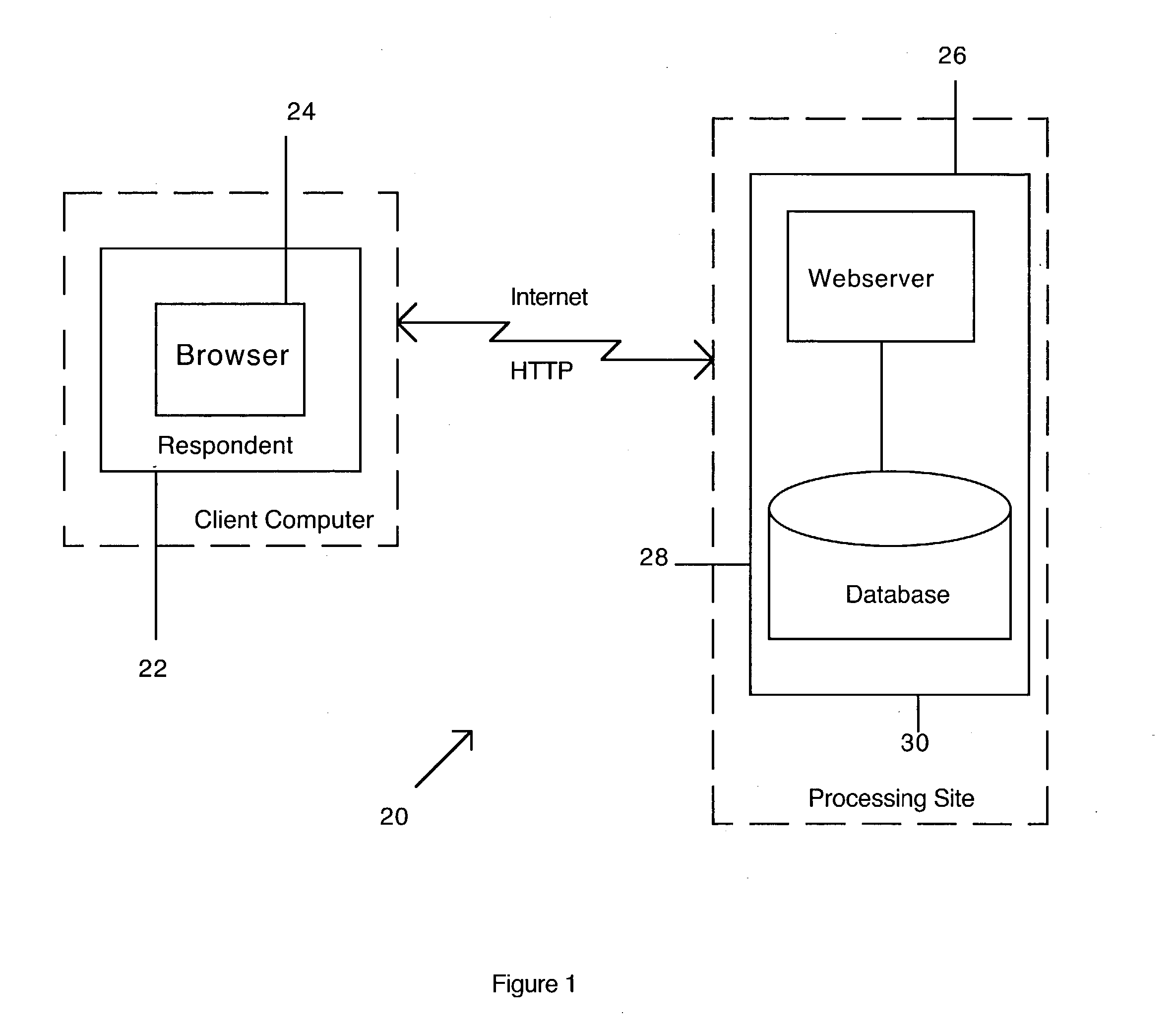System and method for presenting computerized interactive forms to respondents using a client-server-systems technology based on web standards
a client-server system and computerized interactive technology, applied in the field of system and method for presenting computerized interactive forms to respondents using a client-server system based on web standards, can solve the problems of slow response time, low quality of data, and high production cos
- Summary
- Abstract
- Description
- Claims
- Application Information
AI Technical Summary
Benefits of technology
Problems solved by technology
Method used
Image
Examples
Embodiment Construction
[0187] Although the following detailed description contains many specifics for the purposes of illustration, anyone of ordinary skill in the art will appreciate that many variations and alterations to the following details are within the scope of the invention. Accordingly, the following embodiments of the invention are set forth without any loss of generality to, and without imposing limitations upon, the claimed invention.
[0188] The present invention provides a computer-assisted process for gathering information via the Internet from a human respondent operating a client computer. The invention is a cross-platform web application written in Java and JavaScript code. The presented questions / items are selected dynamically, as the respondent fills in the information for questions / items, without the necessity of a trip to a webserver computer in order to update the client-computer display screen. In contrast to standard computer-assisted interactive-forms, which require a trip to the...
PUM
 Login to View More
Login to View More Abstract
Description
Claims
Application Information
 Login to View More
Login to View More - R&D
- Intellectual Property
- Life Sciences
- Materials
- Tech Scout
- Unparalleled Data Quality
- Higher Quality Content
- 60% Fewer Hallucinations
Browse by: Latest US Patents, China's latest patents, Technical Efficacy Thesaurus, Application Domain, Technology Topic, Popular Technical Reports.
© 2025 PatSnap. All rights reserved.Legal|Privacy policy|Modern Slavery Act Transparency Statement|Sitemap|About US| Contact US: help@patsnap.com



